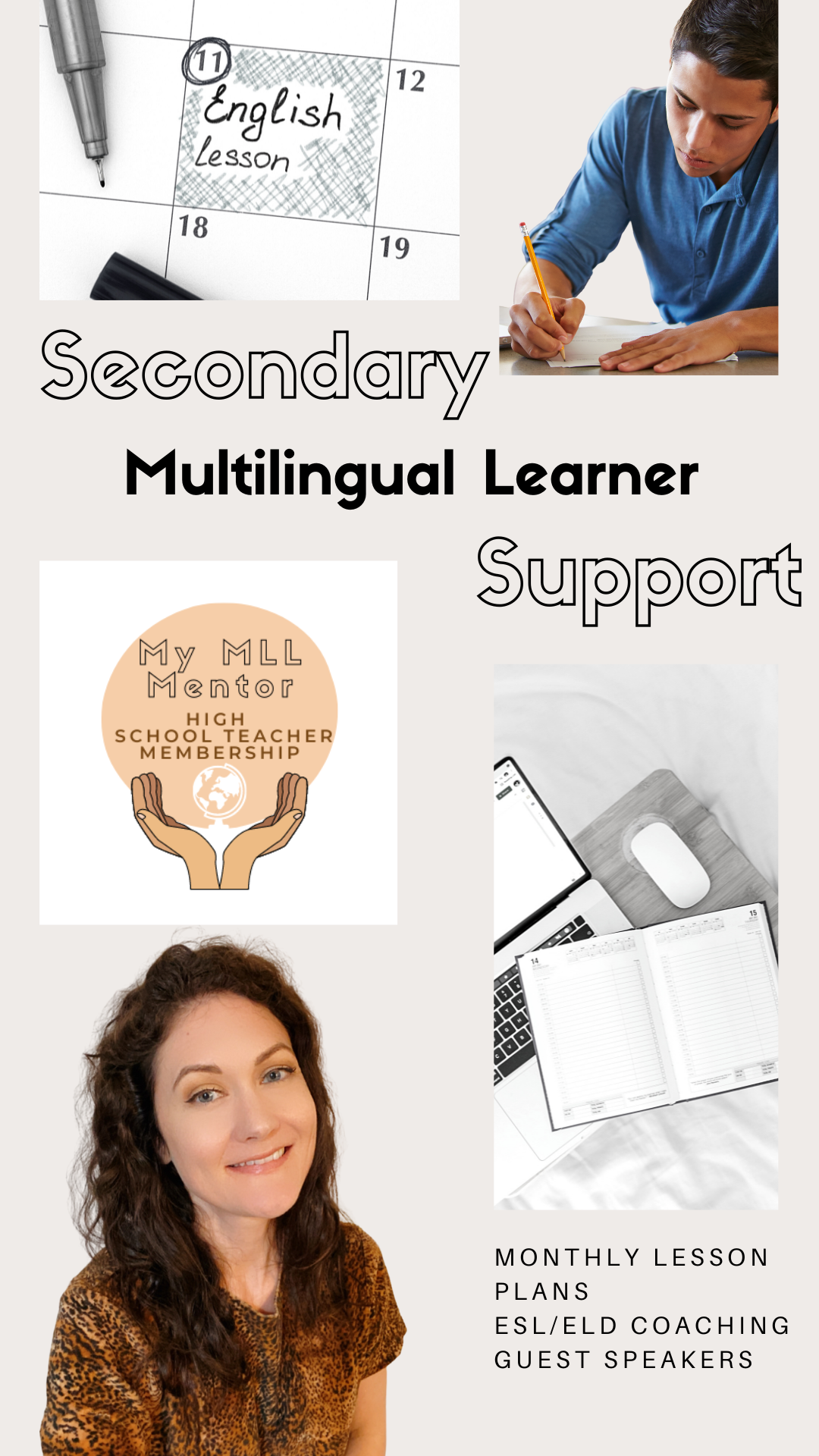|
If you have beginning or intermediate level emergent bilinguals in your classroom, then this is probably a question that is on your mind. When do you allow them to use their first language in class? It can be a slippery slope to developing into a crutch. After all, we want our students to learn English, right?? Before reading, check out this goodie first if you want a cheat sheet. I've heard over the years teachers forcing students to use only English in the classroom. This not only does a disservice to them culturally and linguistically, but it can hurt them in the classroom if they are at a lower level proficiency. This mindset focuses on language as a weakness rather than an asset. When used carefully as a scaffold to help students achieve objectives, students can flourish with the content AND learn English at the same time. The question is: when do we allow them to use it, and when is it too much? The lines can certainly get blurred. But one thing is for sure- make it available only when needed. Otherwise, you are headed to crutchville. Here are some ways to make sure the L1, or first language, is being used correctly. Use it when it does not exclude another student's L1. This year, I have all Spanish speakers so far, so I don't have to worry about adding in other translations to my power points. But last year, I had some Arabic speakers as well. I made sure that whatever I provided in Spanish, I provided in Arabic. And my awful broken Spanish was not used much because it was not fair to the Arabic speakers. If we are leaving anyone out or giving an advantage to another student linguistically, it shouldn't be used. It is not used as the primary language of instruction. English should always be the primary language we use to deliver our instruction, unless you are teaching in a dual immersion program. That does not mean that we can't use other languages in our instruction as support; it only means that English is the focus. It does mean that directions, word banks, word walls, audio summaries, and captions on videos (to name a few) can be in the L1. Use it when it supports students to master your objectives. If using the L1 acts as a stepping stone to get students to mastery, use it. It should be used as a scaffold, and we should also take away the scaffold as they grow. See the next suggestion! Scaffold the L1 support. Take it away the farther you get in the school year as student's language proficiency grows. If we are not taking scaffolds away such as using the L1 in our classes, we run the risk of over-scaffolding and this hinders our student's growth. Think of it like riding a bike. Would you continue to ride it with training wheels on? No, we take them off when we are ready to jump to the next step. This next step may be not using translations on some assignments. Ways to use the L1 in your classroom:
Don't hesitate to allow the L1 in the classroom, but do monitor it to see if students can fly solo some without it. By finding that balance, students will start to really grow and show you mastery with the content and the language. To learn more about strategies for incorporating language into your lessons, check out my course, My EL Mentor: Creating a Language-Rich Classroom! And if you are a high school teacher, consider joining my membership, My MLL Mentor, to discuss ideas like this with other high school ESL teachers!
0 Comments
Leave a Reply. |
AuthorI support middle and high school teachers through monthly lesson plans, coaching, and guest speaker offerings in our Secondary ESL Teacher Membership. Archives
April 2023
Categories
All
|


 RSS Feed
RSS Feed
